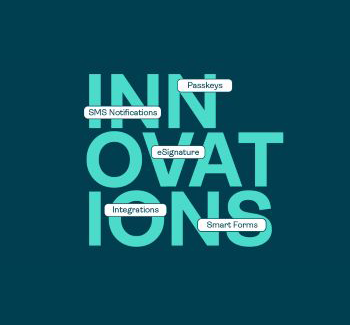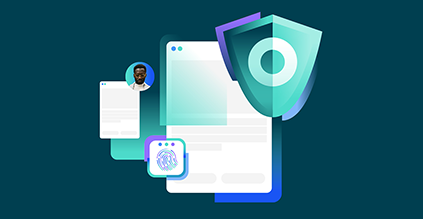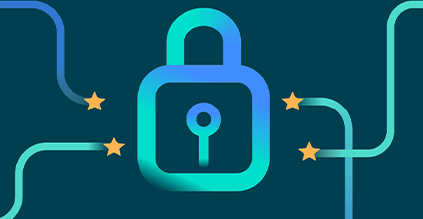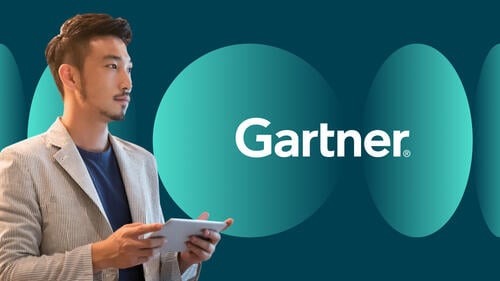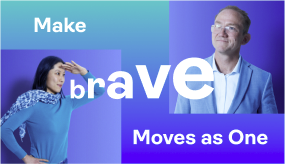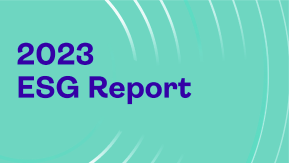Mentorship for women at OneSpan
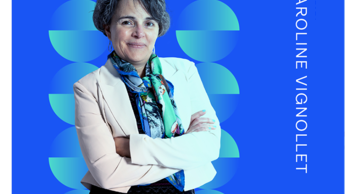
March is Women’s History Month, and it also marks the first year of our mentorship program for women at OneSpan.
Mentorship serves as a critical resource for professionals – especially those underrepresented in their industries – to develop their careers and address diversity gaps in their fields. Women make up just a quarter of C-suite leaders, and women of color are just one in 16. Despite DEI commitments from technology companies, the gender gap in the industry remains significant. In the US, women account for half of the workforce, but only represent 27% of STEM professionals; in Canada, women are 25% of the STEM workforce, and in the European Union, they represent just 17%. Issues such as pay disparity, share of women in leadership roles, and representation of women of color in the industry continue to persist. At OneSpan, we are proud to have 31% of our employees identify as women, surpassing the industry average, with many of them being part of our Women@OneSpan Employee Resource Group.
I’ve been a mentor for the last 15 years of my career in technology, and when I joined OneSpan, I knew I wanted to bring this passion to the company through a formal program.
With the support of our executive team, we decided to start the program by sponsoring it through Women@OneSpan. The first year of the program taught us a lot, and we will use these learnings to improve upon the program in the future. But what this program really showed is that mentorship can inspire people to confidently lean into their strengths and passions. As we continue to expand the program, we’ll use these lessons to iterate and improve it.
How to build enduring mentorship programs
Though there are several considerations to take into account when building programs, it all starts with getting clear on your participants’ goals. This requires clear qualitative research, finding a strong group of mentors, and setting initial expectations and goals for the program.
In our mentorship program at OneSpan, we started small by focusing on 10 pairings. Mentees were asked to fill out a survey stating their goals, which helped me understand who would be a good match for each of them. Though it was challenging to narrow down the list from over 25 interested mentors, it demonstrated a clear opportunity to expand our program scope in the second year.
Based on my experience over the past nearly two decades, I determined the best pairings based on three key guardrails that I consider best practices for anyone building a mentorship program.
- Prioritizing in-person mentorship: While video conferencing provides opportunities to connect with more people globally, it is not an effective format to build mentor-mentee relationships. For this reason, we organized an in-person kick-off meeting as part of our global initiative to facilitate strong and trustworthy relationships from the outset.
- Avoiding manager-report pairings: Mentorship programs, especially those designed for a specific group, such as women in tech, are about development beyond mentees’ current roles, so mentees should not be reporting to their mentors. This encourages a more genuine, honest relationship centered around personal development beyond the scope of their current role or even beyond their time at a company.
- Mentorship pairings that transcend work function or domain: Expanding on the above guideline, pairings should traverse roles or functions. For example, even though I work in Research & Development, I have mentored women in HR and marketing – and in each case, my mentee and I found the differences in our day-to-day work beneficial. We focused on career development best practices, what it’s like to be a woman in tech, and how to navigate unfamiliar aspects of the workplace. Pairings are made based on mentees’ goals, expectations, and preferences – not their roles.
After setting up pairs, our focus shifted towards operationalizing the program. We established three core components to ensure its success:
- Monthly time commitment and end date: Initially, I was surprised by the amount of interest I received from potential mentors. These leaders are incredibly busy, but were willing to take time out to mentor women. I ensured that mentors committed to monthly meetings and set a one-year end date to benchmark progress and provide clear expectations on what to cover in a certain timeframe. Of course, many of the relationships built through the mentorship program will last beyond its duration.
- A framework to inspire productive conversations: One of the goals of the program was to provide avenues for conversation and perspective that mentees wouldn’t have gotten otherwise. In addition to providing training on what the program is and what the expectations are, I found it to be beneficial for mentors to meet with one another to discuss and inspire each other with the most effective approaches, topics, and conversations that have benefited their mentees.
- An expectation of confidentiality: We set the expectation that conversations between mentors and mentees were confidential. Trust underpins the most beneficial and productive mentorship relationships. Even if a mentee expresses concerns or discontent, mentors are expected to respect the promised confidentiality.
Mentorship and a more diverse tech industry
Mentorship, when coupled with other initiatives such as flexible work, DEI programs, and unbiased recruitment, can be a catalyst for closing the gender gap in the tech industry. The guidelines I have outlined above can be applied to develop mentorship programs for any group.
In my career, I have personally witnessed improvements regarding the gender gap in cybersecurity, but we still have a long way to go. I encourage DEI leaders, ERG sponsors, and women in leadership roles to explore how mentorship programs can improve diversity and inclusion within their organizations. I am excited to expand the mentorship program at OneSpan next year.
To hear more perspectives from Women at OneSpan during this Women’s History Month, follow OneSpan on LinkedIn or check out our Q&A with women leaders at OneSpan.
